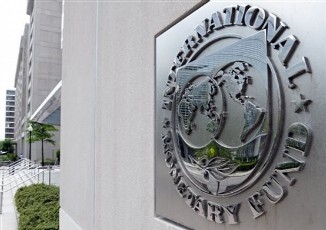Sudan’s Q1 2014 revenue 60% higher than 2013: IMF
August 29, 2014 (KHARTOUM) – Sudan’s economic indicators improved in the first quarter of this year owing in part to the lifting of fuel subsidies which took place about a year ago, the International Monetary Fund (IMF) said in its latest report on Sudan.
 The East African nation has been struggling since the secession of the oil-rich south in 2011 to control soaring budget deficit and double digit inflation figures that have sent prices of basic commodities to record levels.
The East African nation has been struggling since the secession of the oil-rich south in 2011 to control soaring budget deficit and double digit inflation figures that have sent prices of basic commodities to record levels.
To help navigate through its economic woes, Sudan asked to be placed under the IMF Staff-Monitored Program (SMP) which is an informal agreement between a country’s authorities and the IMF to monitor the implementation of the authorities’ economic program. SMPs do not entail financial assistance or endorsement by the IMF executive board.
The latest SMP assessment released on Thursday noted the improved fiscal performance in the form of increased revenues.
“Revenue amounted to SDG 11.3 billion or 2.9 percent of full-year GDP, representing a more than 60 percent increase over the first quarter of 2013. This performance reflects the increase in tax revenue and fuel stabilisation fees. Tax revenue amounted to 1.5 percent of GDP, up from 1.3 percent of GDP in the first quarter of 2013,” the IMF said.
“With current spending at SDG 11.2 billion, and capital spending reaching SDG 1 billion, the overall fiscal deficit was 0.2 percent of GDP, against 0.5 percent of GDP in the first quarter of 2013. Reflecting the improved fiscal stance, the Central Bank’s temporary advances to the government were contained at SDG 290 million, well under the first quarter target of SDG 593 million”.
Khartoum cut fuel subsidies last September which almost doubled prices of gasoline and diesel thus triggering some of the worst protests Sudan has seen in years.
The IMF at the time approved of Khartoum’s decision saying that fuel subsidies “disproportionately” benefit the rich but called for “a new package of corrective measures”, including addressing fiscal imbalances and tax reforms.
On inflation, the IMF maintained its projection that it “will continue its downward trend thus bringing consumer price inflation down to single digits”.
“Twelve-month inflation fell to 35.7 percent at end March, from 41.9 percent at end-December 2013, mainly reflecting lower food prices,” it said.
Sudan’s inflation rate in July rose to 46.8% from 45.3% in June, according to government figures.
The IMF also noted achievement of SMP targets with regards to monetary policy.
“Reserve money expanded by 3.2 percent, against a program target of 6 percent, while broad money growth eased to 6.7 percent. This reflected a lower-than-programmed increase in the Central Bank of Sudan’s (CBOS) net credit to the central government (SDG 13.1 billion, against a target of SDG 14.2 billion), as temporary advances increased by SDG 290 million only, less than half of the program target of SDG593 million, and government deposits at CBOS grew by SDG 1.2 billion, reflecting the closing of most central government accounts in commercial banks”.
The IMF has previously warned that the government’s continued dependence on the Central Bank to finance its budget deficit has fueled inflation and weakened the monetary policy framework.
The CBoS reserves stood at $1.5 billion at the end of March which represented a decline of $83 million over the end of 2013, the IMF said.
The black market exchange rate of the US dollar against the Sudanese pound has deteriorated rapidly since March, the IMF said, “largely because of the intensified security threats to oil production in South Sudan and market participants’ speculations about lower – or even a complete stoppage of – oil-related revenue flows from South Sudan”.
“As a result, CBOS continued to draw down on its foreign exchange reserves; consequently, net international reserves declined by US$90 million in the first quarter, against a program target of a US$50 million increase. With limited resources, CBOS directed its supply of foreign exchange mostly towards supporting the operations of the government and importers of basic commodities such as food and fuel. Since then, the curb market exchange rate has somewhat stabilised after the government’s announcement of its intention to supply foreign exchange to meet the needs of other small importers and households”.
“Given the large size of the curb market, the recent depreciation could push up the prices for imported goods, adding more pressure on consumer prices”.
The IMF called on Khartoum to prevent spending on fuel subsidies to exceed 1.5% of GDP as the current trend will push it to reach about 2% GDP by year-end, against a projected level equivalent to 1.5%.
They also urged the government “to enhance exchange rate flexibility in order to support the new operational monetary framework, which is anchored in reserve money, avoid the loss of international reserves and provide a shock absorber to the economy”.
Sudan’s GDP is estimated to have grown at 2.7% in 2013 and projected to stand at 2.5% in 2014.
(ST)
